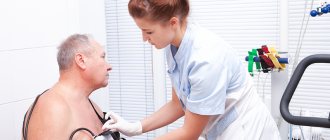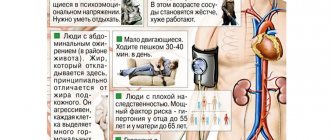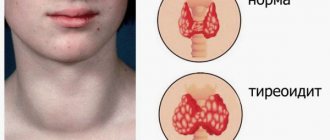For people far from medicine, the phrase hypertension code according to ICD-10 does not mean anything. Even if the person himself suffers from this terrible disease. Many people understand that we are talking about high blood pressure, but what does the code with the strange abbreviation ICD have to do with it and why is it with the number 10 remains a mystery to them.
Everything is quite simple - each disease has its own code in a special disease classifier. There are several codes in this list for various manifestations of hypertension, and the incomprehensible ICD is a simple and understandable thing.
Symptoms
Previously it was believed that normally there could be a slight difference in systolic blood pressure in one person when measured on different arms. But recent data suggest that a difference of 10-15 mm may indicate the presence, if not of cerebrovascular diseases, then at least of peripheral vascular pathology contributing to the development of arterial hypertension and other cardiovascular diseases. Moreover, although this sign has a fairly low sensitivity (15%), it is distinguished by a very high specificity of 96%. Therefore, blood pressure really, as has always been reflected in the instructions, should be measured on both hands, differences should be recorded to order additional examinations, and pressure should be classified according to the maximum value of both hands. To avoid mistakes, it is recommended in each case to measure the pressure on each arm three times at short intervals and consider the lowest numbers to be true. True, there are patients whose pressure values do not decrease with each measurement, but increase. * Optimal blood pressure is SBP (systolic blood pressure) < 120 / DBP (diastolic blood pressure) < 80 mm. * Normal blood pressure is 120-129/80-84 mm (prehypertension according to JNC-VII). * High normal blood pressure 130-139/85-89 mm Hg (prehypertension according to JNC-VII). * 1st degree of hypertension - sBP 140-159/dBP 90-99. * 2nd degree hypertension - sBP 160-179/dBP 100-109. * Stage 3 hypertension - SBP 180 and above/DBP 110 and above. * Isolated systolic hypertension - SBP greater than or equal to 140/dBP below 90.
Prevention of hypertension
Hypertensive disease occupies several ICD-10 codes at once. There are several types of hypertension, including those that can damage different organs. Codes for hypertension were determined by the World Health Organization and later data on them will be processed in statistical centers. In order not to become another unit in statistics, it is advisable to take preventive measures in advance, especially if there is a hereditary predisposition.
Proper nutrition with sufficient minerals and vitamins, normal physical activity, optimal weight and moderate salt intake can greatly help avoid hypertension. If you exclude excessive stress, alcohol abuse and smoking, then the likelihood of hypertension will become even less. And then there will be no need to worry about what ICD-10 code for hypertension will be.
Causes
It is believed that one of the important etiological factors is neuropsychic stress that occurs after intense or prolonged emotional overload. Primary functional disorders occur in the cerebral cortex and in the centers of the hypothalamic region of the limbic-reticular complex. The excitability of the hypothalamic autonomic centers, mainly the sympathetic nervous system, increases, which leads to the development of pressor reactions. The minute output and vascular tone increase. The renal volume decreases, the excretion of sodium and water decreases, which accumulate in the vascular wall, contributing to its swelling. At the same time, the content of ionized calcium in the vascular wall increases. Renal ischemia leads to increased production of renin by the cells of the juxtaglomerular apparatus of the kidney. Renin converts angiotensinogen, which is produced in the liver, into angiotensin I. The latter, under the influence of convertase - angiotensin-converting enzyme (ACE), is converted into angiotensin II, which, in turn, stimulates the sympathetic nervous system, increases norepinephrine in granules and potentiates the vasoconstrictor effect . ACE also inactivates bradykinin, one of the stimulators of endothelial secretion of nitroxide (NO), the main endothelial relaxation factor. Thus, ACE is one of the key regulators of the balance between the factors of vasoconstriction and vasodilation, which determines the role of the ACE gene polymorphism (localized on chromosome 17q23) in the development of arterial hypertension.
Diseases manifested by hypertensive crisis and their codes according to ICD 10
Diseases that can manifest themselves or are diagnosed after fixing a hypertensive vascular crisis are various types of chronic high cardiac pressure (hypertension) with different types of complications and have the following codes and classifications in ICD 10:
- I10 includes essential, or primary, hypertension - a recorded increase in pressure.
- I11 includes hypertension with cardiac complications.
- I12 includes hypertension with kidney complications.
- I13 includes complications of the kidneys and heart, as well as their more or less severe combinations - up to heart and kidney failure.
- I14 is missing.
- Codes I15 contain secondary hypertension, that is, those cases when an increase in pressure up to a crisis is caused by other diseases:
- endocrine: for example, pheochromocytoma or other hormonal neoplasms, as well as diabetes;
- renal: renovascular (renal-vascular) disorders, and others - disturbances in the outflow of fluid and swelling are directly related to vascular tone.
- unspecified reasons: an increase in blood pressure up to a crisis state can be caused by stressful situations and excessive physical exertion, taking certain medications, a reaction to the weather, fluid retention in the body, including due to the consumption of salty foods or lack of drinking.
The place of hypertension in the international classification of the disease
According to WHO, hypertension is in class IX, which includes diseases of the circulatory system. Hypertension code ICD-10, depending on the type, is designated by a code from I10 to I15, not including I14. With the exception of I10, each code has a qualifying third digit for a specific diagnosis.
Although it is not entirely correct to talk about specifics, there are also unspecified types of arterial hypertension. Most often this is hypertension with predominantly simultaneous damage to the kidneys and heart. There is also a secondary unspecified hypertensive disease.
As a rule, after a while the diagnosis is clarified - this is achieved through laboratory tests and analysis of new symptoms that have appeared. After specifying the type of disease, its code changes.
ICD 10 codes for various types of arterial hypertension
Hypertension code ICD 10, designated I11, including I11.0 and I11.9, denotes diseases with predominant damage to the heart. This subgroup does not include combinations of heart and kidney damage; they belong to codes I13 and have 4 internal codes - I13.0, I13.1, I13.2 and I13.9
Codes I12 are for hypertension with renal involvement. The international classification distinguishes hypertension with the development of renal failure against the background of high blood pressure (I12.0). Code I12.9 indicates hypertension with kidney damage without the development of insufficiency of their functions.
The alphanumeric designations I15.0, I15.1, I15.2, I15.8, I15.9 hide various variations of secondary hypertensive disease. For primary hypertension, code I10 is assigned. Hypertensive crises are usually noted this way.
A hypertensive crisis according to ICD 10 code refers to essential hypertension, although a sharp rise in pressure, life-threatening, can also occur with secondary manifestations of the disease. Code I10 is sometimes changed to other codes for hypertensive diseases after the diagnosis has been clarified. Quite often this occurs with hypertension, which affects both the heart and kidneys.
In Russia there is still no legally established classification of hypertensive crises . In the USA and a number of other countries, crises in hypertensive patients are divided into two types:
The first of them requires urgent hospitalization, regardless of the ICD 10 code. The second can be treated at home, followed by treatment in a hospital. And this data can also be subjected to statistical processing.
Target organs in hypertension
Arterial hypertension is a very common cardiovascular disease and the frequency of its manifestations increases with age. In some countries and regions, the percentage of the elderly population reaches 65, and the percentage of young people is about 20.
Despite the fact that the frequency increases with age, the ICD code for hypertension does not change for young and elderly people. This applies to all types of disease - hypertension can disable various organs, and each type has its own code.
The following organs are often affected by hypertension:
- Eyes;
- Kidneys;
- Heart;
- Brain.
In each of the organs, under the influence of high pressure, many processes can occur - all this is related to the work of the vessels that are primarily exposed to the negative effects of hypertension.
In addition to damage to one organ, there are also various combinations. Often, as a result of increased pressure, the kidneys and heart are simultaneously damaged along with the blood vessels. Therefore, according to ICD-10, hypertension with a combination of damage to two organs occupies 4 codes at once.
Manifestations of hypertensive crisis
A hypertensive attack is characterized by pronounced symptoms, which manifest themselves depending on the form and intensity of the disease.
Your blood pressure will always be 120/80 if you drink in the morning.
Main manifestations of GC:
- severe pain in the head (acute, pressing);
- nosebleeds;
- tachycardic manifestations;
- severe dizziness, often with loss of consciousness.
- convulsive states, tremor;
- lethargy, drowsiness, chills;
- states of increased excitability, emotional instability;
- insomnia, taking a long time to fall asleep, intermittent sleep;
- anxiety states;
- painful sensations in the eyeballs, visual disorders (dots before the eyes);
- acoustic disorders (tinnitus);
- nausea and vomiting.
Crisis prevention
To prevent a hypertensive attack from returning and to normalize the general condition, preventive measures are necessary:
- Blood pressure control (you need to measure your blood pressure several times a day, tracking your readings).
- Taking blood pressure-lowering medications prescribed by your doctor.
- Monthly medical examinations.
- Stabilization of the psycho-emotional background, prevention of stressful situations.
- Adequate physical activity.
- Quitting bad habits (smoking, alcohol, overeating).
- Mandatory weight control.
- Compliance with the rules of prescribed diet therapy.
- Control of daily water consumption.
Prevention
Prevention of crises consists of controlling blood pressure and maintaining it at a certain level.
For this it is important:
- eradicate bad habits;
- fight excess weight;
- eat rationally;
- Do moderate physical activity 5 days a week (walking, swimming, cycling).
Prevention of crises, in addition to lifestyle correction measures mentioned above, also includes:
- constant monitoring of blood pressure and taking antihypertensive drugs or the use of double and triple combinations of drugs;
- adequate sleep and rest.
- avoidance of stressful situations.
Particular relevance of the problem
Arterial hypertension is the most common chronic disease, affecting approximately 20-30% of people.
Increased attention to this problem is explained by the fact that hypertension is the main factor provoking the development of hypertensive attacks. . The relevance of the problem of hypertensive crisis lies in the increase in the number of attacks in people
Over the last 3 years alone, the number of ambulance calls for HA has increased 1.5 times.
The relevance of the problem of hypertensive crisis lies in the increase in the number of attacks in people. Over the last 3 years alone, the number of ambulance calls for HA has increased 1.5 times.
It is worth noting that since there are quite a large number of reasons for the development of HA, no one is immune from the occurrence of this condition.
GK after alcohol
Alcohol negatively affects the vascular system, causing increased blood pressure
Alcohol is characterized by a peculiar effect on the circulatory system.
During the first time after drinking alcohol, blood vessels dilate under its influence, which leads to a decrease in systemic blood pressure.
Then comes the secondary effect of alcohol , in which the blood vessels narrow to a greater extent than before drinking alcohol.
As a result of this, blood pressure increases, so the development of a hypertensive crisis after alcohol is a completely natural phenomenon, especially in hypertensive patients.
It is worth noting that this happens either with a single consumption of a large amount of alcohol, or with regular excessive consumption.
HA in children
Hypertensive crisis in children develops against the background of secondary symptomatic hypertension.
HA occurs more often in adolescent children
Common causes of this condition are the following ailments:
- kidney disease (glomerulonephritis, renovascular disease);
- neurogenic abnormalities (disorders due to poisoning, meningitis, traumatic brain injury);
- pheochromocytoma (adrenal tumor);
- hyperthyroidism;
- Coarctation of the aorta (a type of congenital defect of the vessel).
Important! In adolescence, attacks can also develop with primary hypertension. . In adolescents, this condition develops as a type of vegetative-vascular dystonia, which is associated with neuroregulatory, autonomic, and endocrine disorders
In adolescents, this condition develops as a type of vegetative-vascular dystonia, which is associated with neuroregulatory, autonomic, and endocrine disorders.
Symptoms of the condition in children are the same as in adults and also require emergency measures.
GC in the elderly
Hypertensive crisis in older people is diagnosed much more often. Only 18% of victims are people under 60 years of age.
Features of hypertensive attacks in old age are:
- High levels of upper pressure.
- Damage to baroreceptors and carotid arteries.
- High pressure lability.
- Tendency to a protracted relapsing course.
- Gradual development of the process.
- Frequent development of consequences in the form of cardiovascular diseases.
In addition, elderly people are characterized by a blurred clinical picture of the condition, which greatly complicates its diagnosis and treatment.
Consequences and complications
The following complications of a hypertensive crisis are possible:
- cerebral infarction;
- pulmonary edema;
- hypertensive encephalopathy;
- myocardial infarction;
- eclampsia;
- dissecting aortic aneurysm ;
- aneurysm rupture;
- acute renal failure;
- retinal hemorrhages;
- papilledema.
Severe complications lead to sudden death, for example with atrial fibrillation , myocardial infarction , strokes (ischemic or hemorrhagic), and the development of renal failure . The consequences of a hypertensive crisis include long-term dizziness and headaches, blurred vision, myocardial ischemia and the development of chronic heart failure . The consequences in women include impaired cognitive function and the development of dementia .
How does a hypertensive crisis proceed?
The main way to establish a crisis is the readings of a tonometer, since its symptoms may coincide with the symptoms of migraines and other types of headaches, with manifestations of dystonia, cerebrovascular accidents of other origins, heart diseases (without increased blood pressure), etc.
Symptoms of hypertensive crisis
During an attack of arterial hypertension, the following symptoms will be observed:
- absolute symptom: tonometer readings above 140/90. In this case, it is necessary to take into account the peculiarities: in a young girl who has a normal blood pressure of about 100/60, the indicator of an attack may be a pressure of 140/90, and in an elderly man with hypertension, who regularly has a pressure of 160/90, a symptom of critical hypertension will be an increase in pressure relative to its “norms”;
- the most common symptoms (may be absent or correspond to another disease): a noticeable increase in pulse, headache, chest pain and shortness of breath, weakness, chills and a feeling of coldness in the extremities, sweating, dizziness, nausea, spots and flashes before the eyes, convulsions, lightheadedness .
It is also important to remember that, although attacks of critical hypertension usually accompany hypertension in the elderly, they can also occur in childhood, adolescence, and in adults who do not have obvious health conditions for vascular diseases. . Hypertensive cerebral crisis
Hypertensive cerebral crisis
Chronic high blood pressure can lead to hypertensive encephalopathy, especially when combined with various disorders of cerebral blood flow, for example, against the background of so-called osteochondrosis, that is, problems with compression of blood vessels in the neck. As a result, an attack of high blood pressure can manifest itself neurologically and lead to a cerebral crisis, otherwise, a transient cerebrovascular accident (TCI), which, in addition to the symptoms listed above, may resemble a stroke. PNMK can also lead to strokes in the near future after an attack, since it implies temporary brain hypoxia. Cerebral crisis should not be confused with a vertebrobasilar attack (dizziness when changing body position).
The main symptoms of cerebral crisis, in addition to the general hypertensive symptoms mentioned above, may be:
- loss of balance;
- disturbances of consciousness: problems with memory, naming objects, speech, lethargy;
- visual impairment: double vision, temporary blindness;
- muscle stiffness of half the body or face: this symptom, as is known, can also indicate a stroke, but can also accompany migraines, so it requires an emergency call, but does not yet mean a stroke.
List of sources
- Andreev A.N., Belokrinitsky V.I., Dityatev V.P. Hypertensive crises. Ekaterinburg: State Educational Institution of Higher Professional Education UGMA, 2007; 204.
- Gilyarevsky S.R., Kuzmina I.M. Modern approaches to the treatment of patients with acute, pronounced increases in blood pressure and hypertensive crises. Karyology. 2010; 19: 71–88.
- Ruksin V.V. Emergency care for arterial hypertension. A short guide for doctors. M.: MEDpress-inform, 2009; 48.
- Zadionchenko V.S., Gorbacheva E.V. // Hypertensive crises of breast cancer. – 2001. – No. 9. – P. 628-630.
- Dolzhenko M. N. //Hypertensive crises: modern principles of therapy/Acute and emergency conditions in the practice of a doctor. 2007. pp. 19-21.
Treatment tactics for uncomplicated attacks
In the treatment of uncomplicated hypertensive crisis, medications are used in the form of tablets. These include Clonidine, Nifedipine and Captopril. Clonidine is suitable for patients with a history of stroke or rapid heart rate.
Stories from our readers
Conquered hypertension at home. It's been a month since I forgot about pressure surges. Oh, I tried so many things - nothing helped. How many times did I go to the clinic, but they prescribed useless medications over and over again, and when I returned, the doctors simply shrugged their shoulders. I finally dealt with the pressure, all thanks to this article. Anyone who has problems with blood pressure should read it!
Read the full article >>>
If other antihypertensive drugs help increase cardiac output, then Clonidine is not characterized by this feature. The therapeutic effect is detected an hour after use.
In a situation where the first tablet did not give the required therapeutic effect within 60 minutes, the medication is repeated in a similar dosage.
Contraindications are the following situations:
- Difficult work that requires high concentration, as the drug gives a pronounced sedative effect.
- If the etiology of GC is due to severe mental disorders.
Nifedipine helps prevent stroke and relieves the alarming symptoms of an attack. It is available in the form of chewable tablets. The maximum time for which the medicine works is half an hour.
It should be noted that the medication can lead to a hypotensive attack due to a sharp decrease in blood pressure. Therefore, the dosage and frequency of use must be accurately calculated.
When stopping an uncomplicated hypertensive crisis, Captopril is often used - an effective and inexpensive remedy. The advantage is that there are few contraindications; it can be taken in old age.
An attack that threatens complications from target organs must be stopped quickly. First of all, call an ambulance. Delay can complicate the serious picture and lead to the death of the patient.
At this stage of hypertension, many standard hypertensive medications do not give the required effect
It is important to reduce blood pressure by 20-25% in the first hour of the crisis.
Sodium nitroprusside helps prevent negative consequences and lower blood pressure. The advantage is that it operates smoothly and its action can be controlled.
The medicine gives the following effects:
- Dilates blood vessels.
- Reduces heart rate.
If you have a history of hypothyroidism, impaired cyanide metabolism, or kidney pathology, you should not use the drug.
Use with extreme caution when intracranial pressure increases.
Sodium nitroprusside helps normalize coronary circulation and reduces the intensity of clinical manifestations. Incorrect dosage can complicate the clinical course, leading to intoxication, dizziness, nausea, and increased body temperature.
To relieve a hypertensive crisis, it is permissible to use Nitroglycerin in the form of tablets or injections; it acts quickly, but has a short-term effect. Trimetaphan camsilate is administered intramuscularly, there are many contraindications. Modern analogue of Corinfar.
Heart attacks and strokes are the cause of almost 70% of all deaths in the world. Seven out of ten people die due to blockages in the arteries of the heart or brain.
What’s especially scary is the fact that a lot of people don’t even suspect that they have hypertension. And they miss the opportunity to fix something, simply dooming themselves to death.
- Headache
- Increased heart rate
- Black dots before the eyes (floaters)
- Apathy, irritability, drowsiness
- Blurred vision
- Sweating
- Chronic fatigue
- Swelling of the face
- Numb and chilly fingers
- Pressure surges
Even one of these symptoms should give you pause. And if there are two of them, then have no doubt - you have hypertension.
How to treat hypertension when there are a large number of medications that cost a lot of money?
Most medications will do no good, and some may even be harmful! At the moment, the only medicine that is officially recommended by the Ministry of Health for the treatment of hypertension is NORMIO.
Before
The Institute of Cardiology, together with the Ministry of Health, is conducting a “
no hypertension
” program.
Within the framework of which the drug NORMIO is available FREE OF CHARGE
to all residents of the city and region!
Source: davleniya.net
Types of classifications for hypertension
Arterial hypertension according to ICD 10 is divided into primary and secondary. In this case, primary hypertension (essential) is an independent disease, and secondary - as symptoms of the underlying disease, for example, renal failure.
Experts recommend the following classification for use:
- organs are not damaged;
- there are signs of disturbances in the functioning of target organs identified during the examination;
- organ damage is significant.
In addition, a classification is used according to the clinical course, persistence of increased blood pressure, and changes in the fundus:
- transient, that is, with a one-time increase in pressure, without damage, without treatment, blood pressure does not decrease;
- labile, examination reveals abnormalities, without treatment the blood pressure level does not decrease;
- stable, blood pressure level is very high, there are changes in the veins, hypertrophic changes in the heart;
- malignant, develops rapidly, is almost impossible to treat, complications such as stroke, heart attack, and angiopathy often occur.
Using ICD 10, you can accurately determine the stage and form of the disease, make predictions about therapy, and the development of complications. This is necessary to create an effective treatment regimen.
Source https://serdce-med.ru/arterialnaya-gipertenziya/mkb-10/
For people far from medicine, the phrase hypertension code according to ICD 10 does not mean anything. Even if the person himself suffers from this terrible disease. Many people understand that we are talking about high blood pressure, but what does the code with the strange abbreviation ICD have to do with it and why is it with the number 10 remains a mystery to them.
Everything is quite simple - each disease has its own code in a special disease classifier. There are several codes in this list for various manifestations of hypertension, and the incomprehensible ICD is a simple and understandable thing.
Purposes of disease classification
At the moment, the unified classifier of diseases and health problems has only two goals - collecting statistics and facilitating work with data. The ICD provides uniform methodological approaches to statistical data on diseases and makes it possible to compare international data.
Thanks to this normative document, conditions began to appear all over the world for a comparative analysis of statistical data on diseases and mortality occurring at different times in many countries. The appearance of codes has significantly simplified this task; now there is no need to write the full name of the disease, but rather indicate the corresponding code.
The international classifier allows us to determine the epidemiological situation, the prevalence of certain diseases, including the frequency of sharply “younger” hypertension.
Arterial hypertension code according to ICD-10 describes more than one common disease; the code may differ due to the concept of target organs damaged by this disease.
Treatment methods
After emergency care has been provided to the victim, the doctor prescribes appropriate treatment.
Therapy consists, among other things, in preparing the patient’s consciousness for a healthy life. The victim of a crisis must give up smoking and alcoholic beverages
After stopping the attack, it is very important to adjust your diet - foods should be not only healthy, but nutritious. Doctors recommend doing therapeutic exercises daily, and a relaxing massage is helpful.
Drug therapy
Drug treatment should only be prescribed by the attending physician. Basically, treatment procedures involve lowering blood pressure. The doctor prescribes short-acting calcium antagonists (Corinfar, Nifedipine). These medications have a relaxing effect on the vascular walls. They are prohibited for tachycardia, severe aortic stenosis, and circulatory decompensation.
There are many effective medications to relieve an attack, but if they do not have a positive effect, the doctor may prescribe the following medications:
- Beta adrenergic receptors. The use of these medications requires monitoring the patient's heartbeat and blood pressure. If it is impossible to use Obzidan, Proxodolol is prescribed. They are contraindicated if the patient suffers from heart pathologies, bradycardia, or poor atrioventricular conduction.
- If the patient experiences fear during a crisis, about 4 mm of Droperidol is prescribed, which has a neuroleptic and hypotensive effect.
- Administration of Furosemide may be necessary if the patient has circulatory problems or renal failure.
- Injections of Dibazol or Eufillin are recommended for crises with severe symptoms of brain damage.
If an attack is caused by withdrawal from a particular hypertensive drug, then the first step is to take it in small doses.
Treatment of hypertensive conditions is also carried out using folk remedies. To prevent repeated crises, it is necessary to follow the doctor’s recommendations, take medications in the prescribed dosage, and lead a healthy lifestyle.
Source https://gipertonia03.ru/neoslozhnennyj-gipertonicheskij-kriz.html
« Previous entry
How to Diagnose the Condition
Diagnosis of a hypertensive crisis begins with the study of certain criteria:
- sudden onset;
- individually high blood pressure levels;
- complaints.
In turn, the patient’s complaints are divided into cardinal (rapid heartbeat, chest pain, shortness of breath), cerebral (headaches, dizziness, nausea) and general gevegative (chills, trembling, feeling of heat).
As for examinations, a specialist may prescribe the following examinations and tests to make a diagnosis:
Examinations help the doctor accurately diagnose
- Physical examination - measuring blood pressure, assessing skin color, moisture and general condition.
- A general urine test is used to determine kidney damage.
- Complete blood count to determine concomitant diseases.
- Biochemical blood test - to determine the cause of the condition and its consequences.
- ECG and EchoCG are necessary in order to exclude heart pathologies.
Based on the examination results, the specialist makes an accurate diagnosis and prescribes appropriate treatment.
ICD disease codes
Despite the differences in the provision of medical services in different countries, there is a unified international classification of diseases. It contains an impressive list of various diseases, accepted internationally.
The World Health Organization has been working on the creation of such classifiers for many years. The full name of this document (ICD) is more detailed - “International Statistical Classification of Diseases and Related Health Problems”.
All diseases are divided into 21 classes depending on body systems, groups of diseases and human conditions. Each class has its own letter and numeric meanings corresponding to a specific disease. One code contains 1 letter and 2 numbers indicating the disease, and the third number is only a clarifying diagnosis.
The World Health Organization is involved in the process of creating disease classifiers.
WHO began to oversee the medical classification of diseases in 1948 after the 6th revision. The tenth revision of the ICD is currently in effect, which is why it is designated 10. This version of the classification emerged as a result of long-term international cooperation through the search for compromises that are convenient for everyone. The consent of the parties is necessary to achieve the goals of the ICD.









